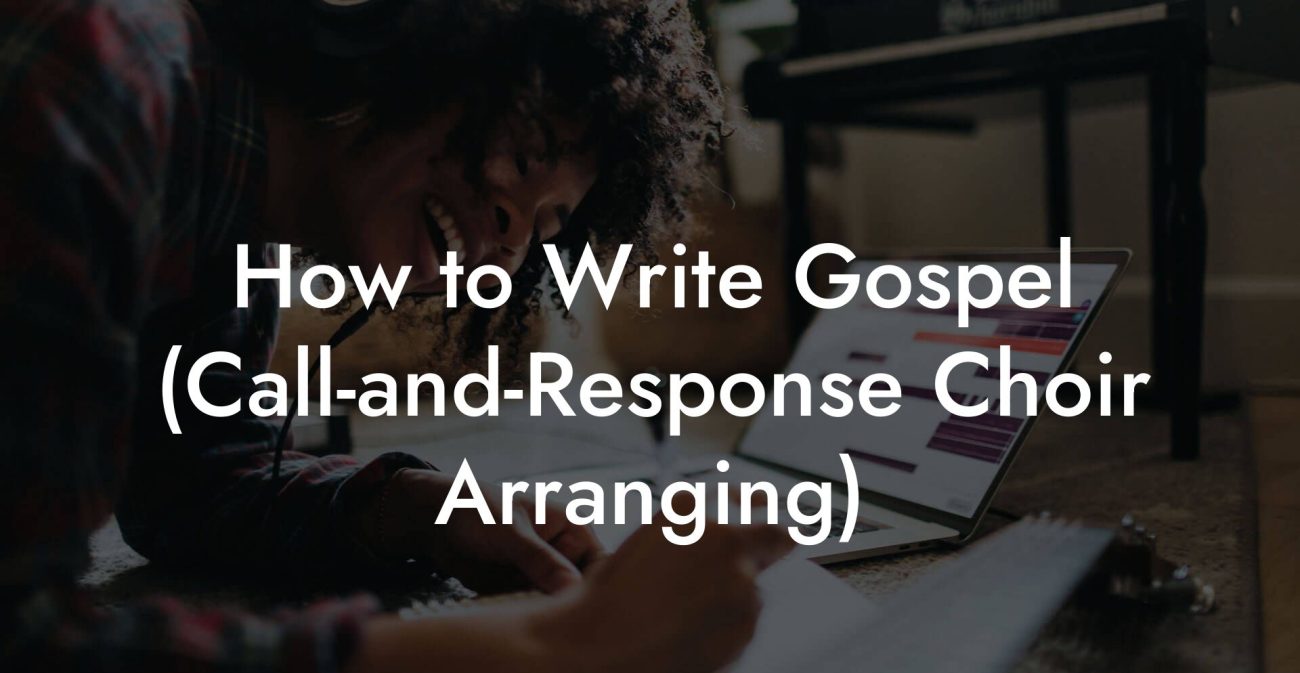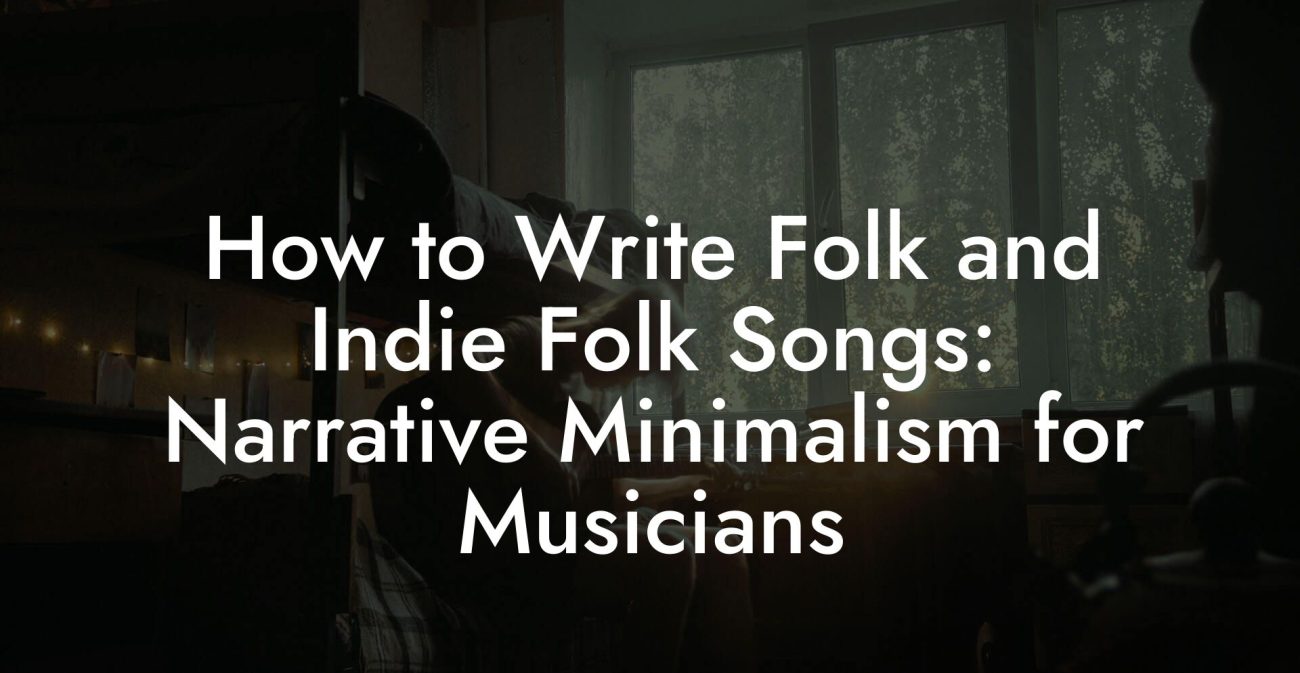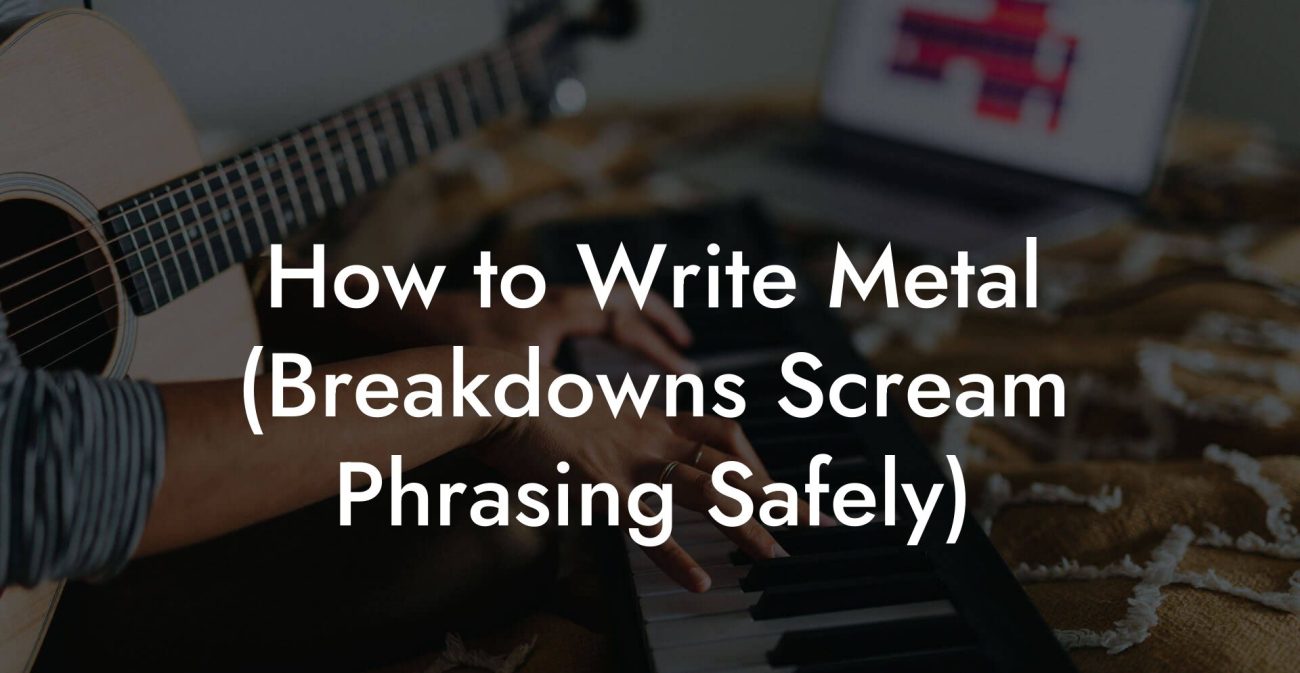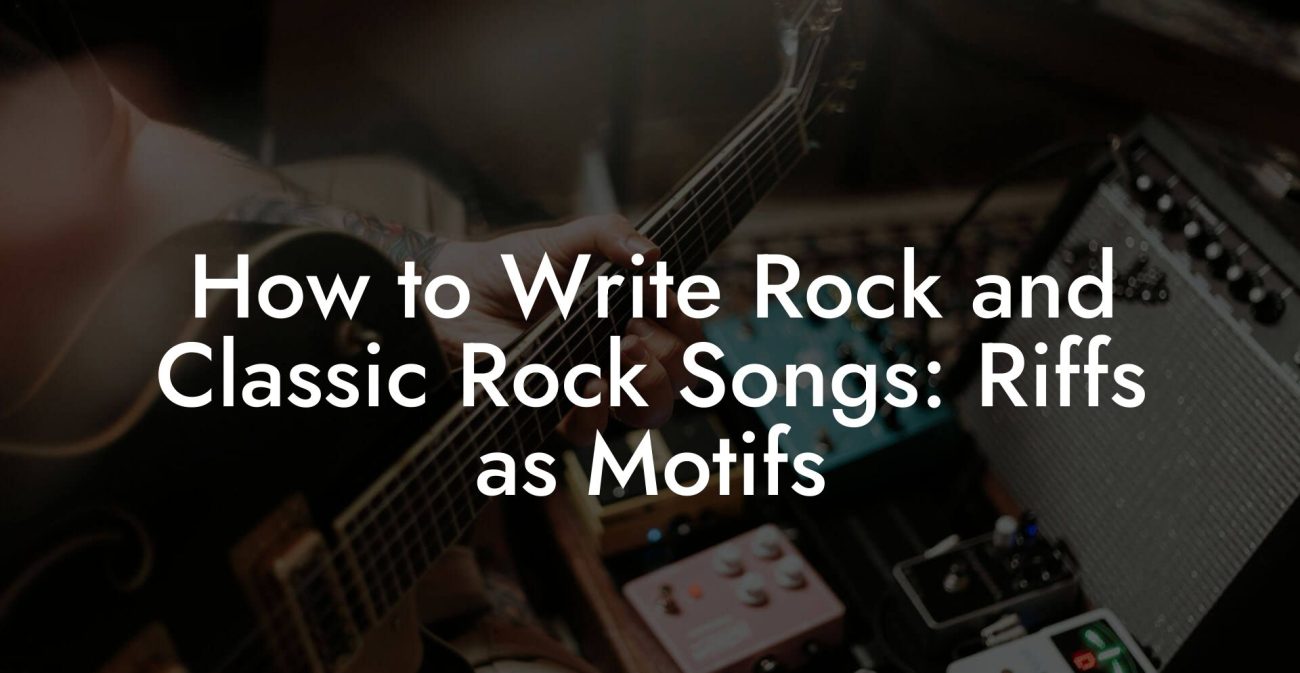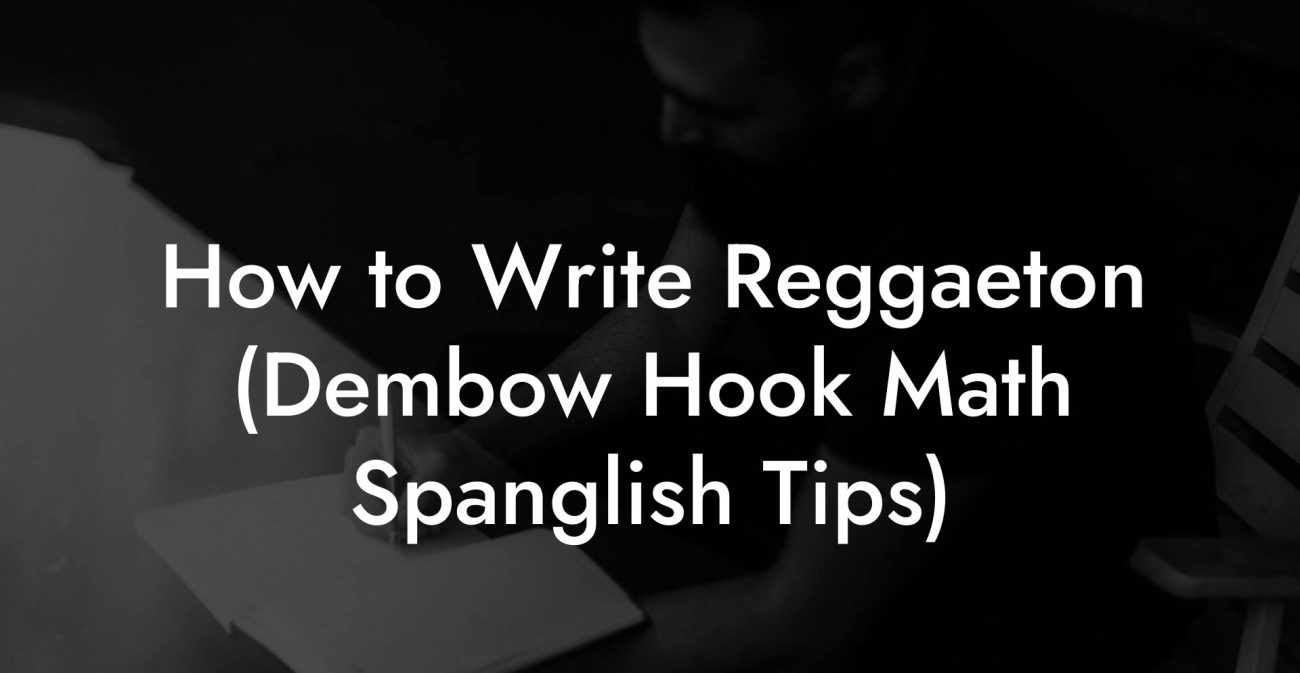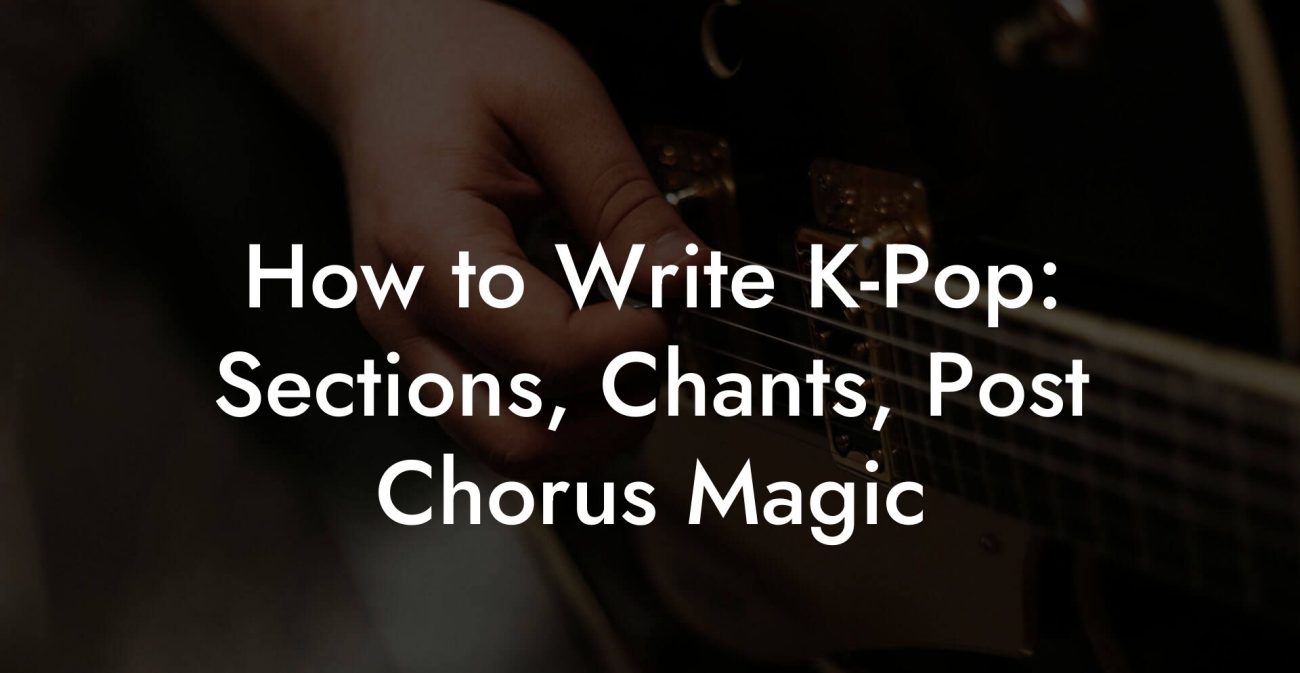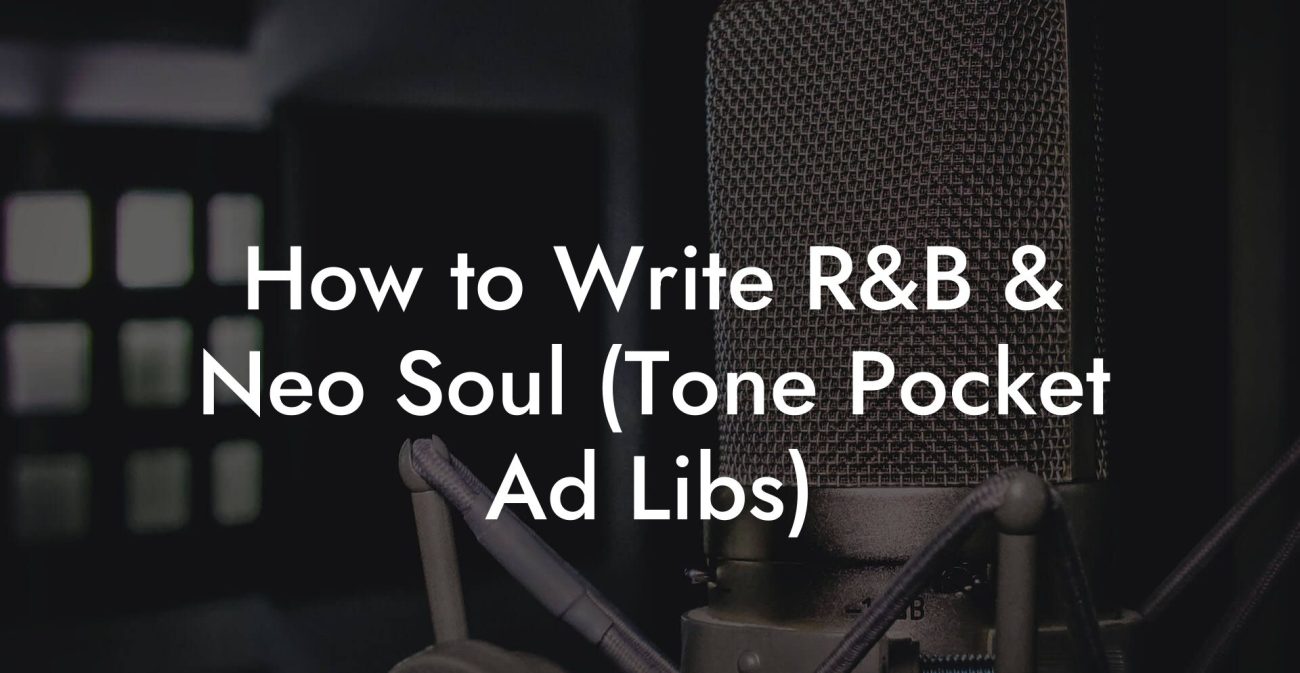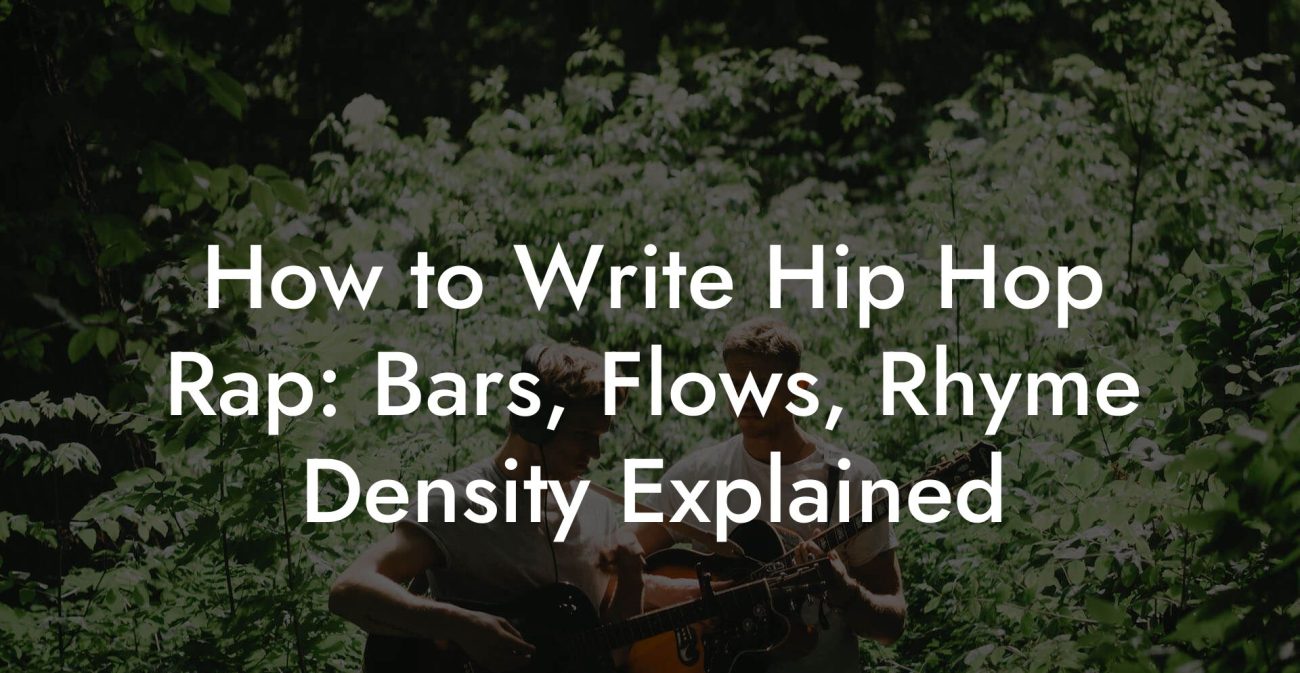Songwriting Advice
How to Write Afrobeats and Afrobeat: Groove Call and Response
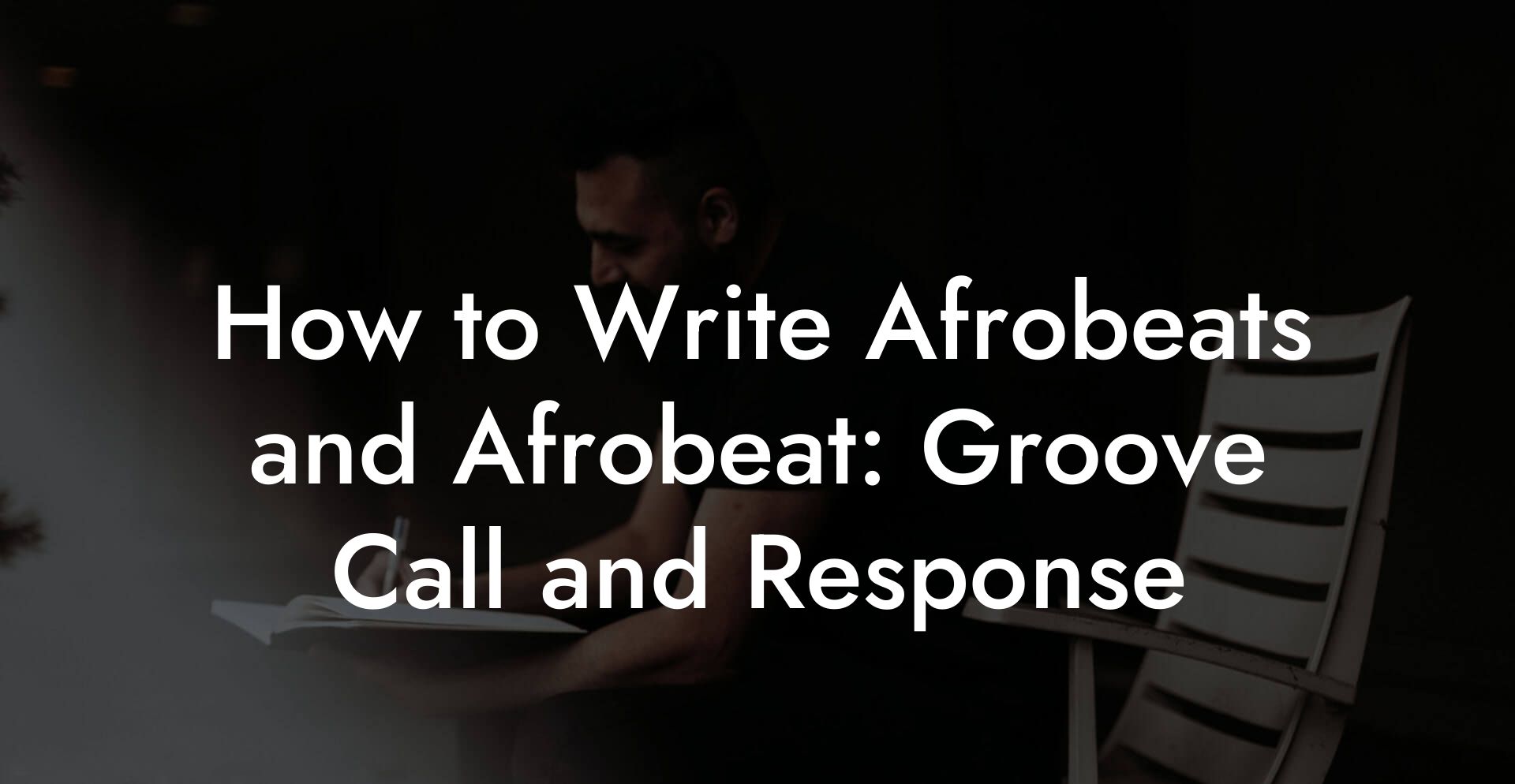
If you want a track that makes people move, scream the hook, and text their crush at 3 AM, you are in the right place. This guide teaches you how to write Afrobeats and Afrobeat songs from the ground up. We will cover the difference between Afrobeats and Afrobeat, grooves, call and response, percussion, basslines, melody, lyric strategy, production choices, arrangement, cultural respect, and practical exercises you can use today. Everything is written for hungry artists who want to make hits without selling their soul to a weird algorithm god.
Quick Interruption: Ever wondered how huge artists end up fighting for their own songs? The answer is in the fine print. Learn the lines that protect you. Own your masters. Keep royalties. Keep playing shows without moving back in with Mom. Find out more →
Quick Links to Useful Sections
- Afrobeats versus Afrobeat Explained
- What Makes Afrobeats Work
- Basic Tools and Terms
- Groove First Workflow
- Drum Pocket Details
- Basslines That Talk
- Call and Response That Slays Crowds
- Vocal call and response
- Instrumental call and response
- Topline Writing for Afrobeats
- Lyric Strategy and Language Choices
- Chord Progressions That Support Rhythm
- Arrangement Tips That Keep Ears and Feet
- Production Essentials
- Performance and Crowd Control
- Cultural Respect and Collaboration
- Songwriting Exercises You Can Use Today
- Groove Lock Minute
- Call and Response Drill
- Local Flavor Pass
- Two Chord Hook
- Melody Diagnostics
- Finishing and Getting It Out
- Common Mistakes and Quick Fixes
- Examples You Can Use as Templates
- How to Collaborate with Producers and Musicians
- Monetization and Rights Basics
- Action Plan You Can Use Today
- Frequently Asked Questions
We will explain every term and acronym. If you do not know what BPM or DAW means, relax. We will make it feel obvious. You will get examples you can steal, micro drills that force progress, and a finish plan so your song stops living in your phone and starts living on stages and playlists.
Afrobeats versus Afrobeat Explained
First thing first. The words Afrobeats and Afrobeat are not the same thing. People get this wrong all the time and then act like they discovered rhythm by accident. Here is the simple map.
- Afrobeat refers to the genre pioneered by Fela Kuti in the 1960s and 1970s. It is often long form, politically charged, built on jazz and funk influence, with big horn arrangements, hypnotic grooves, and layered percussion. It is one genre with a specific legacy.
- Afrobeats is a modern umbrella term for popular African pop music styles coming out of countries like Nigeria and Ghana. It includes danceable pop, highlife influence, amapiano inspired elements, and R and B crossover moments. It is shorter, radio friendly, and melody forward.
If you want to write a modern radio hit with Nigerian or Ghanaian energy you will mostly be writing Afrobeats. If you want to write a fifteen minute political jam with horns and a groove that hypnotizes a stadium you are leaning into Afrobeat. This guide focuses mainly on the Afrobeats sound that dominates charts while keeping lessons you can apply across both styles.
What Makes Afrobeats Work
Afrobeats songs are built to be felt in the body first and understood by the brain second. They rely on tight rhythm, simple memorable melodies, a strong groove, and repeated hooks. Here are the pillars.
- Groove that sits deep in the pocket and makes the listener want to move.
- Call and response where a lead vocal or instrumental phrase is answered by backing vocals or an instrument. This creates conversation and crowd participation.
- Signature rhythmic guitar often playing syncopated chopped chords or single note motifs.
- Percussive detail like shakers, congas, cowbell, or talking drum giving life to the rhythm.
- Simple chord movement that supports melody without stealing attention.
- Melodic and lyrical hooks that repeat and are easy to sing along to even if the listener does not speak the language.
Basic Tools and Terms
Before we write, let us make sure the toolbox is not full of mystery boxes.
- BPM means beats per minute. Afrobeats often sits between 95 and 110 BPM for a relaxed party vibe and between 105 and 115 BPM when you want more energy. Afrobeat can be slower and more elastic because of long grooves.
- DAW means digital audio workstation. This is the software you use to record and arrange music. Examples include Ableton Live, FL Studio, Logic Pro, and Pro Tools.
- Topline is the melody and lyrics that go on top of your beat. Topline writers sing it first as a guide for the whole song.
- Call and response is a musical conversation. The lead sings a phrase and backing vocals or instruments answer. It is a crowd control device and an earworm maker.
- Prosody means how words match the rhythm and melody. Good prosody feels natural and not forced.
Groove First Workflow
Afrobeats is groove first. You do not start by writing a long lyric. You start with rhythm and a motif that gets stuck in the head. Here is a workflow that forces a groove before lyrics.
- Set BPM. Pick something in the 95 to 110 range. If you feel like the dance floor needs to move more pick 100 to 108. If you want lazy sexy, go lower.
- Create a drum pocket. Program a kick pattern that hits on the first beat and then plays with space. Add a snare on the back beats or clap layered to give attack. Layer shakers or hi hats in triplet sixteenth patterns for swing feel. Keep the drums simple at first and lock the groove with the bass later.
- Add a percussion bed. Use congas, bongos, cowbell, or shaker. The percussion should groove around the main drum pattern and add swung subdivisions. Think of percussion as the seasoning not the main course.
- Design a rhythm guitar or pluck pattern. This is often palm muted or lightly compressed and plays short syncopated chords. Make a short two bar loop and let it repeat until the head starts nodding.
- Lock the bass with the kick. The bassline in Afrobeats is melodic and syncopated. It often plays around the root note with small passing tones that anticipate the next chord.
Real life example. Imagine you are making a track for a rooftop party in Lagos. The kick hits like a footstep. The bassline slides like someone leaning into a joke. The guitar chops are the hand clapping in the crowd. If you can feel that scene while you work you are on the right path.
Drum Pocket Details
Drums in Afrobeats are tight but elastic. You want forward motion and space for the groove to breathe.
- Kick should be punchy but not overpowering. Try layering a subby sine with a short mid punch sample.
- Snare or Clap often sits on the two and four. Some producers prefer a rimshot feel. Layer a clap with a room reverb for dimension.
- Hi hats are usually active. Use rolling triplet patterns or sparse sixteenth accents. Velocity variation makes it feel human.
- Percussion like shaker and cowbell should be recorded or sampled with some human timing. Quantized percussion feels robotic.
Pro tip. Program your drums with slight swing or move some percussion hits a few milliseconds off the grid to create the pocket. Your listeners will feel it but not name it. That is the magic.
Basslines That Talk
Bass in Afrobeats is conversational. Think of it as someone telling a story under the melody. It supports the harmony but also creates movement.
- Start with a simple root note pattern. Add passing notes that land before the beat to create a push feeling.
- Use slides and small portamento for character. Not every note needs to be long. Short staccato bass hits can drive momentum.
- When the chorus arrives, simplify the bass to leave room for the topline to shine. In verses you can be more playful.
Example bass idea in C major. Bar one play C on beat one then anticipate with E on the and of two then drop back to C on three. That anticipation makes people move their shoulders before they know why.
Call and Response That Slays Crowds
Call and response is where Afrobeats becomes a party with a DJ that reads the room. Call and response creates interaction. You can use it in vocals or with instruments.
Vocal call and response
Have the lead sing a hook line and a group or doubled backing vocal repeat or respond with a short phrase. Keep the response shorter and punchier than the call. The response can be a repeated word, a vocal chop, or a chant that listeners can sing back.
Example.
Lead call: Baby stay closer all night long
Response: Closer
Or use a response that changes mood slightly to create a twist.
Lead call: I am driving all the way
Response: Come through
Instrumental call and response
Use horns, marimba, or a synth stab to answer the vocal. This works great when your vocalist leaves space. The instrument response should have a distinct sonic identity so the crowd learns to expect it.
Micro drill. Take your chorus phrase and mute the second repeat. Replace it with a horn stab phrase that mirrors the vocal contour. If the room notices the instrument and starts nodding harder you are winning.
Topline Writing for Afrobeats
Topline writing in Afrobeats favors melody that sits comfortably in the mid range and bounces off the groove. It is catchy but often subtle. The best toplines feel like a conversation wrapped in melody.
- Sing on vowels over your groove. Use a recorder on your phone. Do not worry about words. Mark the phrases that feel good to repeat.
- Pick one strong phrase as your title. Short titles work best. Titles can be in English, Pidgin, Yoruba, Twi, or any language you speak. If you use a language you do not own collaborate with someone who does.
- Turn the melody into a phrase with words. Put the strongest stress words on the strong beats. That is prosody again. If the word feels awkward to sing, change it.
- Create a response phrase that is shorter and emphatic. Repeat it in the chorus as a hook and in the final chorus with ad libs for extra energy.
Real life scene. If you write a topline that your friends can sing after one listen on a quick car ride you are close. If they need the lyric sheet you are not done yet.
Lyric Strategy and Language Choices
Afrobeats lyrics are often playful, romantic, and direct. They can also be boastful or celebratory. Simplicity wins. Here is how to write lyrics that connect.
- One core idea per chorus. Pick love, flexing, dancing, or leaving. Keep the chorus focused.
- Specific images in verses. Mention a place, an item, or a small action. This makes the lyric feel lived in.
- Use Pidgin or local phrases if you can. They add authenticity and are often catchier than literal English. If you are not fluent get help from native speakers to avoid awkward translations.
- Call and response words should be short and repetitive. Words like baby, girl, waka, make, oh oh, and gon can become mantras.
Example verse line before and after.
Before: I like the way you dance under the lights
After: Your waist bends like the streetlight bends the night
That second line gives an image and a tiny movie. Afrobeats loves that kind of small precise picture.
Chord Progressions That Support Rhythm
Afrobeats usually uses simple progressions that allow the rhythm to do the heavy lifting. Common patterns are two or four chord loops. Here are some options.
- I IV V vi loops in major keys work well for bright vibes.
- Minor key loops with a raised major sixth can feel hopeful yet wistful.
- Modal interchange where you borrow one chord from the parallel mode can add color into the chorus.
Keep chords moving slowly. The melody and bass will create forward motion. If you change chords too often the groove can feel busy.
Arrangement Tips That Keep Ears and Feet
Arrangement is about when to remove or add elements so listening never gets boring.
- Start with a signature motif in the first four bars. This could be a vocal chant, a guitar stab, or a percussion figure that returns as a motif.
- Use the verse to strip back. Let the groove breathe and give space for the vocal story.
- Bring everything in for the chorus. This is the payoff.
- Use a pre chorus as a tension device. The pre chorus should increase rhythmic activity or harmonic motion to make the chorus feel inevitable.
- Drop to a sparse bridge or breakdown to create drama and allow for a final chorus climax.
Arrangement trick. Remove kick for one bar right before the chorus and bring it back with a heavier clap on the chorus downbeat. The contrast makes the chorus feel larger even if you did not add new elements.
Production Essentials
Your production choices determine how the groove lands. Here are practical mixing and sound design tips.
- Space and delay on vocals can create that warm club feel. Use a short slap delay or dotted eighth delay that matches your BPM. Always tempo sync the delay in your DAW.
- Reverb on backing vocals should be darker and short so you keep clarity. A long plate on the lead vocal can wash it out.
- Compression on the rhythm guitar can make the chops consistent and pop in the mix. But avoid total squashing; keep dynamics for groove.
- Sidechain the bass to the kick so the low end has room. This helps club systems translate the groove.
- Automation is your friend. Automate filter opens and texture levels for builds rather than adding new midi layers every chorus.
A quick check. Play your mix on phone speakers, laptop, and a car. If the groove loses life on phone speakers you might be relying on low sub information that disappears on small systems. Make sure the rhythm and midrange carry enough energy on small speakers.
Performance and Crowd Control
Afrobeats is made to be performed live. Call and response is perfect for crowd participation. Here are tips for writing performance friendly moments.
- Include a chantable line that is short and repeated. People like to yell one word together.
- Leave vocal gaps for the crowd to sing. A two bar break with a rhythm clap pattern invites people to join.
- Design an instrumental hook that can be whistled or hummed. That becomes your earworm.
- Write ad libs and backing shouts that the band can repeat to keep the energy high across shows.
Cultural Respect and Collaboration
If you are working in a style rooted in cultures that are not your own be mindful. Afrobeats draws from many West African traditions and languages. A few rules to keep your work honest.
- Collaborate with native artists when using local languages or cultural references. This avoids awkward or offensive usage.
- Give credit to traditional rhythms and instruments when they inspire your work. A liner note goes a long way.
- Beware of stereotypes in lyrics. Avoid lazy tropes and instead focus on real stories or clear emotions.
Real life check. If a friend who grew up in the culture laughs and says your phrase means something else entirely, listen. Fix it. This is not about policing creativity it is about making work that lifts instead of misrepresents.
Songwriting Exercises You Can Use Today
Groove Lock Minute
Pick a BPM and make a two bar drum and percussion loop. Repeat it for five minutes. Do not change anything. Sing on vowels for three minutes. Mark the strongest two gestures. Those are your topline seeds.
Call and Response Drill
Write a one line call that is eight syllables. Create three response options that are one to three syllables. Sing each option over the chorus. Choose the one that makes you want to shout it back at the singer.
Local Flavor Pass
Pick one local phrase in a language you know. Write a chorus that centres that phrase. If you do not know a language collaborate with someone who does and pay them. Keep the phrase short for instant recognition.
Two Chord Hook
Make a two chord loop. On repeat sing different titles over the top until one sticks. Build the chorus around that title. Two chords force melodic creativity.
Melody Diagnostics
If your topline is not sticking check these things.
- Range Make the chorus sit higher than the verse. A third to a fifth higher gives lift.
- Leap and settle Use a leap into the chorus title then resolve by steps. The ear loves that movement.
- Rhythmic identity Give the chorus a rhythmic motif that repeats. Even if the notes change the rhythm becomes the hook.
- Simplicity If people cannot hum it after one listen simplify. Repeat the best phrase more.
Finishing and Getting It Out
- Lock the groove. If the drums and bass are not tight nothing else matters.
- Lock the topline and the call and response. Sing it until you can hum it blindfolded.
- Make a simple arrangement demo. Do not over produce the demo. The idea needs to be clear.
- Play it for a small crowd or send to friends without explanation. If they sing the response back you have a keeper.
- Polish production. Tighten low end with sidechain. Balance percussion levels so the midrange pops on small systems.
- Release with visuals. Afrobeats is visual as well as sonic. A short dance clip or performance clip will help reach listeners quickly.
Common Mistakes and Quick Fixes
- Too many elements Fix by removing anything that does not support rhythm or the hook.
- Overwritten chorus Fix by reducing the chorus to one strong line and a short response.
- Drums too static Fix by adding small percussion fills and velocity variation.
- Topline in the wrong register Fix by moving the chorus higher or rewriting lines for comfort.
- Ingredients without context Fix by imagining a scene where the song is played and letting that scene drive arrangement choices.
Examples You Can Use as Templates
Template 1 Bright Party Verse Chorus
- Tempo 100 BPM
- Two bar drum loop with shaker triplet feel
- Guitar chops on off beats
- Bassline that anticipates the two and four
- Chorus call: You dey make me loose my mind
- Chorus response: My baby
Template 2 Slow Romantic Groove
- Tempo 95 BPM
- Subby kick and soft rimshot
- Electric piano pad with gentle organ
- Bass uses slides into root notes
- Chorus call: Come closer baby come near
- Chorus response: Oya come
How to Collaborate with Producers and Musicians
When you bring your song to a producer communicate the groove not an obsession with lyrics. Share a short voice note of the topline and a loop of the drums. Let the producer add percussion textures. If you work with session musicians record their takes together if possible. Live rhythm players bring micro timing that a quantized program cannot replicate. When using samples clear them. Afrobeats listeners notice authenticity and also notice cheap stolen loops.
Monetization and Rights Basics
If your song becomes a hit you want to get paid. Two important terms.
- Publishing covers the songwriting rights. Make sure all writers are registered with a performing rights organization. Examples include ASCAP, BMI, PRS, and in Nigeria there is COSON. These collect royalties when your song plays on radio or streaming services.
- Master rights cover the actual recording. If you own the master you control licensing for commercials or films. If a label funded the recording you might not own the master. Get these details in writing before money changes hands.
Real life tip. If you are landing a feature on another artist track ask for split percentages in writing before the session. Clear communication prevents messy fights later.
Action Plan You Can Use Today
- Set BPM to 100 and create a two bar drum and percussion loop with a triplet shaker feel.
- Add a rhythmic guitar chop pattern that sits in the midrange.
- Create a bassline that locks with the kick and adds a small slide into the root on bar two.
- Record a two minute vocal vowel pass and mark the top two gestures that feel repeatable.
- Choose a short title phrase and make it the chorus call. Write three short responses and pick one for the chorus response.
- Arrange verse and chorus with a pre chorus that increases rhythmic tension. Build for the final chorus with a short breakdown before the last chorus.
- Play the demo for five listeners and ask one question. Which word did you sing back. Fix only the lyric that blocks singback.
Frequently Asked Questions
What is the difference between Afrobeats and Afrobeat
Afrobeat is the older genre associated with Fela Kuti and long form horn driven grooves while Afrobeats is a modern pop umbrella that covers contemporary West African popular music. One is a historical genre and the other is a style family that dominates charts today.
What BPM should Afrobeats songs use
Most Afrobeats songs sit between 95 and 110 BPM. Choose 95 to 100 for a languid sexy feel and 100 to 110 for dancefloor urgency. Tempo choice affects groove and vocal phrasing so pick a tempo that fits the topline mood.
How do I write authentic lyrics in another language
Collaborate with native speakers. Use a phrase they love and build around it. Do not rely on Google Translate. Pay for translations and songwriting help. Authenticity matters and audiences notice when language is used respectfully.
Can Afrobeats be made with software only
Yes. Many Afrobeats hits are made inside DAWs using samples and virtual instruments. Still live percussion and guitar players add a human micro timing that lifts the groove. If you only use software focus on humanizing velocity and timing.
What instruments are common in Afrobeats
Electric and acoustic guitars playing chopped rhythms, synth stabs, marimba or mallet instruments, congas, shakers, drum kit with punchy kick, bass guitar or synth bass, and occasional horn stabs. Use instruments that serve the groove not the ego.
How do I make a call and response that works live
Keep the response short and repeatable. Leave space in the arrangement for the crowd to answer. Use a crowd friendly word or a vocal chant that is easy to shout. Rehearse the timing with your band so the call is never swallowed by the beat.
Do I need to use local dialects to make Afrobeats
No. Many Afrobeats hits use English only. Using local dialects can add authenticity and open markets but it is not required. If you do use local dialects do so with respect and correct usage.
What makes an Afrobeats chorus memorable
A short title phrase, a rhythmic motif, and a response phrase. Repeat the combination and give it a distinct sound. The easiest chorus to remember is one people can sing with one finger pointing at the singer.




